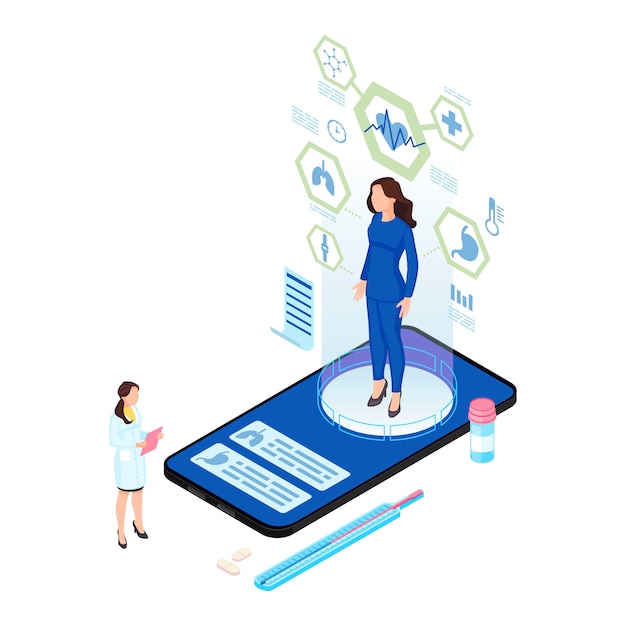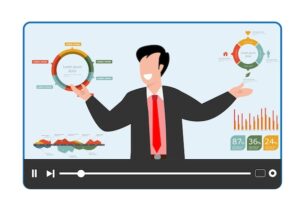How to Incorporate Remote Patient Monitoring with Telehealth
How to Incorporate Remote Patient Monitoring with Telehealth

How to Incorporate Remote Patient Monitoring with Telehealth
How to Incorporate Remote Patient Monitoring with Telehealth
The Benefits of Remote Patient Monitoring
Remote patient monitoring is particularly useful for tracking and managing a wide range of health conditions. By utilizing RPM, healthcare providers can remotely monitor vital signs, track symptoms, and collect data on various health parameters. This proactive approach empowers healthcare professionals to intervene early and make informed decisions, ultimately improving patient outcomes. Some of the conditions that can be effectively tracked through remote patient monitoring include:
High blood pressureDiabetesWeight loss or gainHeart conditionsChronic obstructive pulmonary disease (COPD)Sleep apneaAsthma
Devices Used in Remote Patient Monitoring
To effectively monitor these conditions, patients utilize a variety of devices that are both familiar and specialized. Some commonly used devices in remote patient monitoring are:
Weight scales: Patients can easily track their weight fluctuations using digital scales.Pulse oximeters: These devices measure oxygen saturation levels in the blood, providing valuable insights into respiratory health.Blood glucose meters: Diabetic patients can monitor their blood sugar levels through these portable devices.Blood pressure monitors: Patients with hypertension can conveniently measure their blood pressure at home.Apnea monitors: Specifically designed for patients with sleep apnea, these monitors track breathing patterns during sleep.Heart monitors: Individuals with heart conditions can use these devices to monitor their heart rate and rhythm.Specialized monitors for dementia and Parkinson’s disease: These devices track specific symptoms related to these conditions.Breathing apparatuses: Some patients with respiratory conditions require specialized devices to monitor their breathing.Fetal monitors: Pregnant women can monitor the health of their unborn babies through these devices.
Integrating Remote Patient Monitoring with Telehealth
The seamless integration of remote patient monitoring with telehealth offers numerous benefits for both healthcare providers and patients. Let’s explore some of the reasons why more and more providers are implementing RPM in conjunction with telehealth:
1. Enhanced Patient Care
Remote patient monitoring allows healthcare providers to continuously monitor their patients’ health conditions, providing timely interventions and personalized care plans. By tracking vital signs and symptoms, healthcare professionals can identify potential complications early on, leading to improved patient outcomes.
2. Improved Access to Healthcare
For patients who live in remote areas or have limited mobility, accessing healthcare services can be challenging. Remote patient monitoring eliminates the need for frequent in-person visits, making healthcare more accessible and convenient. Patients can receive high-quality care from the comfort of their own homes.
3. Prevention of Health Complications
RPM plays a crucial role in preventing serious health complications. By closely monitoring patients with chronic conditions such as hypertension or diabetes, healthcare providers can detect abnormalities and intervene before complications arise. This proactive approach can reduce hospitalizations and emergency room visits.
4. Efficient Use of Healthcare Resources
Incorporating remote patient monitoring into telehealth helps optimize the utilization of healthcare resources. Healthcare providers can remotely monitor a larger number of patients, ensuring that resources are allocated effectively. This can result in cost savings and improved efficiency within the healthcare system.
5. Patient Empowerment
Remote patient monitoring empowers patients to take an active role in managing their health. By regularly tracking their own vital signs and symptoms, patients gain a better understanding of their conditions and can make informed decisions about their healthcare. This increased engagement leads to improved self-management and overall well-being.
Successful Implementation of Remote Patient Monitoring
To effectively implement remote patient monitoring with telehealth, healthcare providers should consider the following steps:
1. Selecting the Right Technology
Choose a remote patient monitoring platform that aligns with your specific needs and requirements. Consider factors such as ease of use, data security, and compatibility with existing telehealth systems.
2. Patient Education and Training
Provide thorough education and training to patients on how to use the remote monitoring devices correctly. Ensure they understand the purpose and importance of monitoring their health parameters regularly.
3. Establishing Communication Channels
Set up clear channels of communication between healthcare providers and patients. This can include video consultations, secure messaging, or phone calls to discuss any changes or concerns regarding the patient’s health.
4. Data Collection and Analysis
Regularly collect and analyze the data generated by the remote patient monitoring devices. Look for patterns or anomalies that may require intervention or adjustment to the patient’s care plan.
5. Care Coordination
Facilitate seamless care coordination among healthcare providers involved in the patient’s care. Ensure that all relevant data and information are shared appropriately to provide comprehensive and coordinated care.
Conclusion
Remote patient monitoring, when integrated with telehealth, brings numerous benefits to both healthcare providers and patients. By utilizing remote monitoring devices, patients can conveniently track their health conditions, while healthcare professionals can remotely monitor and intervene when necessary. This proactive approach leads to improved patient outcomes, increased accessibility to healthcare, and efficient utilization of resources. With the right technology, patient education, and communication channels in place, the successful implementation of remote patient monitoring alongside telehealth can revolutionize the way healthcare is delivered.





